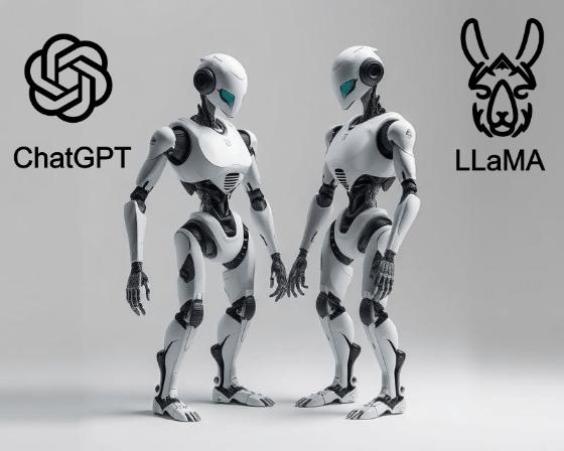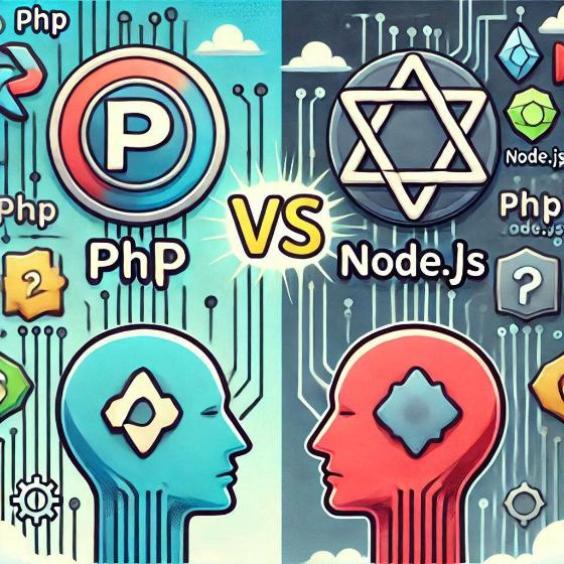ChatGPT vs LLaMA
ChatGPT vs LLaMA: Comparison of New Generation Language Models
In recent years, language models have experienced a dizzying evolution, allowing machines to generate text in a more coherent, precise, and natural way than ever before. Two of the most prominent names in this field are ChatGPT, developed by OpenAI, and LLaMA (Large Language Model Meta AI), launched by Meta (formerly known as Facebook). Both models have been designed to improve interaction between machines and humans, but what makes them different? And which one is more suitable for different applications? In this article, we will compare both models in terms of architecture, capabilities, and applications.

1. Origin and Purpose
ChatGPT, created by OpenAI, has been one of the most popular language models in the last decade. Its success lies in its ability to understand and generate text in an extremely coherent way, facilitating tasks such as virtual assistance, content creation, automatic translation, and much more. ChatGPT has been trained on a huge amount of data and has a very versatile approach, making it an ideal option for various applications.
On the other hand, LLaMA is the language model developed by Meta with the aim of being more efficient in terms of scale and accessibility. Meta has created LLaMA with the intention of offering a highly competitive language model that is not only powerful but also more accessible for researchers and companies looking to conduct advanced research or implement AI solutions in controlled environments. LLaMA is an open-source model, which means it can be adapted and used by anyone with the appropriate resources.
2. Architecture and Size
Both models, ChatGPT and LLaMA, are based on transformer architectures, but they differ in some key aspects.
- ChatGPT: It is based on the GPT (Generative Pretrained Transformer) architecture, and its latest version (GPT-4) has an impressive ability to understand and generate text in a more fluent way. ChatGPT has been optimized specifically for conversational and interactive content generation applications. Although OpenAI has not revealed exact details about the size of GPT-4, it is known that the model has a huge number of parameters, allowing it to handle complex tasks.
- LLaMA: The LLaMA model is also based on the transformer architecture, but Meta has placed a special emphasis on efficiency. Unlike GPT-4, LLaMA has smaller versions that still retain an impressive performance capacity. LLaMA is more efficient in terms of the amount of resources needed to train and run it, allowing developers and research teams to use smaller versions of this model without compromising performance as much.
3. Capabilities and Applications
- ChatGPT: One of the strengths of ChatGPT is its ability to interact in natural-flowing conversations, making it an ideal tool for chatbots, virtual assistants, and customer support. It is also very effective in content generation, such as blogs, articles, and even programming code. ChatGPT is optimized to be versatile, capable of addressing a wide variety of tasks in multiple domains.
- LLaMA: Although LLaMA is also capable of generating text, its focus is more on being an efficient and flexible model for research. Since Meta has opened the code for LLaMA, researchers can use it to explore and develop new applications, such as text analysis, content generation, and more. However, LLaMA is mainly used in research and testing environments, where efficiency and scalability are essential.
4. Accessibility and Use
- ChatGPT: Although OpenAI has released versions of ChatGPT to the public through its API and applications such as ChatGPT Plus, access to the full GPT-4 model generally requires a paid subscription. This somewhat limits the accessibility of the model, although the quality of the service and the functionalities it offers are exceptional.
- LLaMA: Unlike ChatGPT, LLaMA is an open-source model. This means that researchers, companies, and developers can access the model for free and adapt it to their needs. However, due to the fact that LLaMA is more complex and requires more computing resources to be trained and used, it is not as accessible to everyone, especially those with fewer resources.
5. Which One Should You Choose?
The choice between ChatGPT and LLaMA depends on your needs and the context in which you plan to use the language model.
- ChatGPT is the ideal option if you need a highly optimized model for conversational or content generation tasks. Its accessibility, ease of use, and powerful performance make it an excellent choice for businesses, content creators, and application developers looking to effectively integrate AI.
- LLaMA, on the other hand, is more suitable for those looking for efficiency and flexibility in research. If you are a researcher or a company with specific needs and adequate resources to implement large-scale language models, LLaMA can be a more accessible and efficient option.
My Experience
In my personal experience, I have used both models, ChatGPT and LLaMA, on multiple occasions, and although both have their value, I have noticed certain limitations with LLaMA. One of the most frequent problems I have encountered is that LLaMA gets tangled when asked to translate text that is within HTML tags. Often, the result is incorrect, as it does not respect the original tags and, in some cases, even goes so far as to invent new tags or translate links, which should not happen. Additionally, articles generated by LLaMA always have a "something" that, when read, is evident that they were created by an AI. The coherence and fluency of the content generated by ChatGPT tends to be more natural, making it more suitable for creating high-quality texts.
Both ChatGPT and LLaMA are impressive language models that are driving innovation in the field of artificial intelligence. ChatGPT stands out for its versatility and optimization for conversational applications, while LLaMA presents itself as an efficient and accessible option for researchers and developers looking to explore and adapt AI in their own environments.
Both models are pushing the boundaries of what is possible with language models, and the future of artificial intelligence looks brighter than ever.





